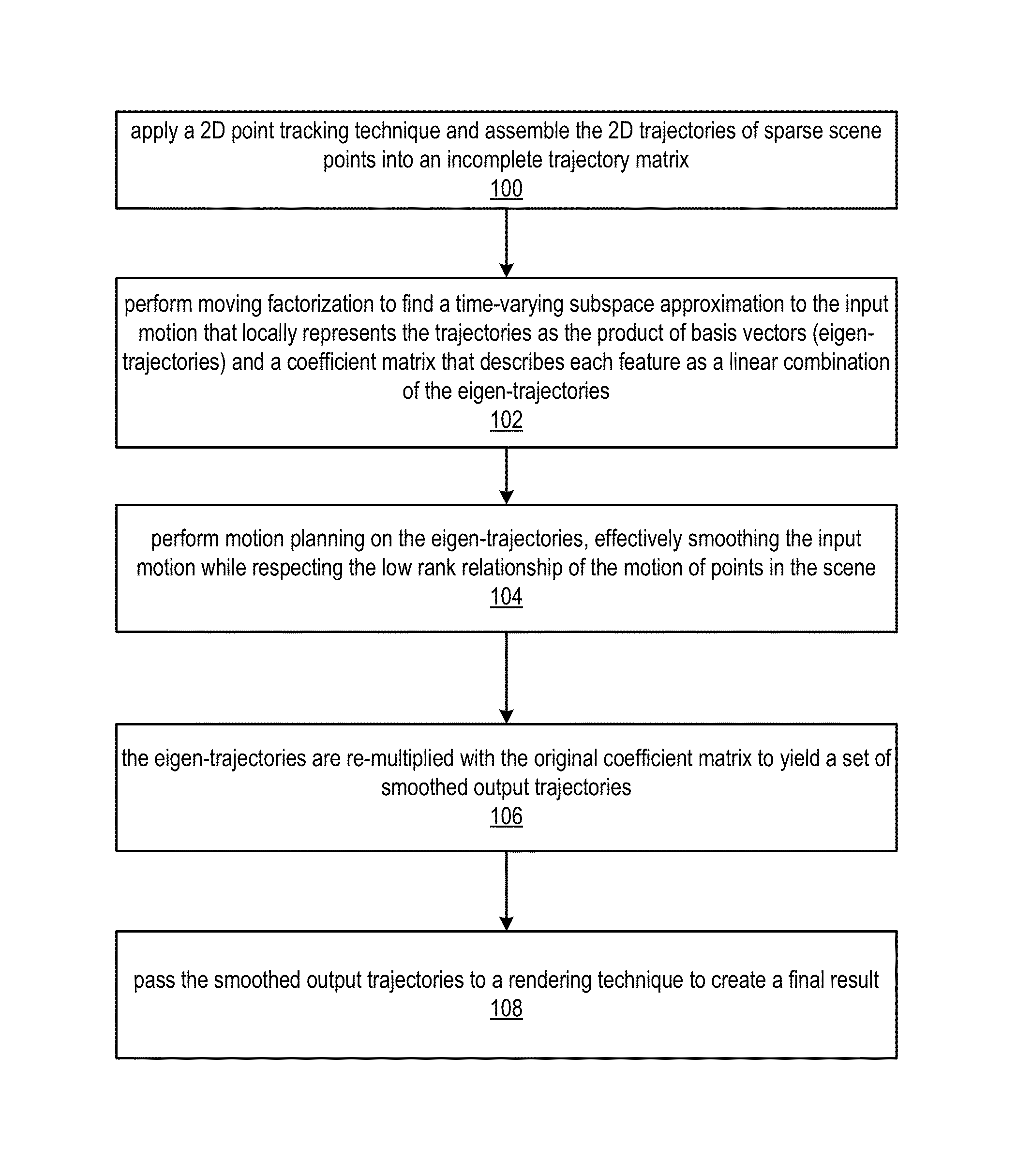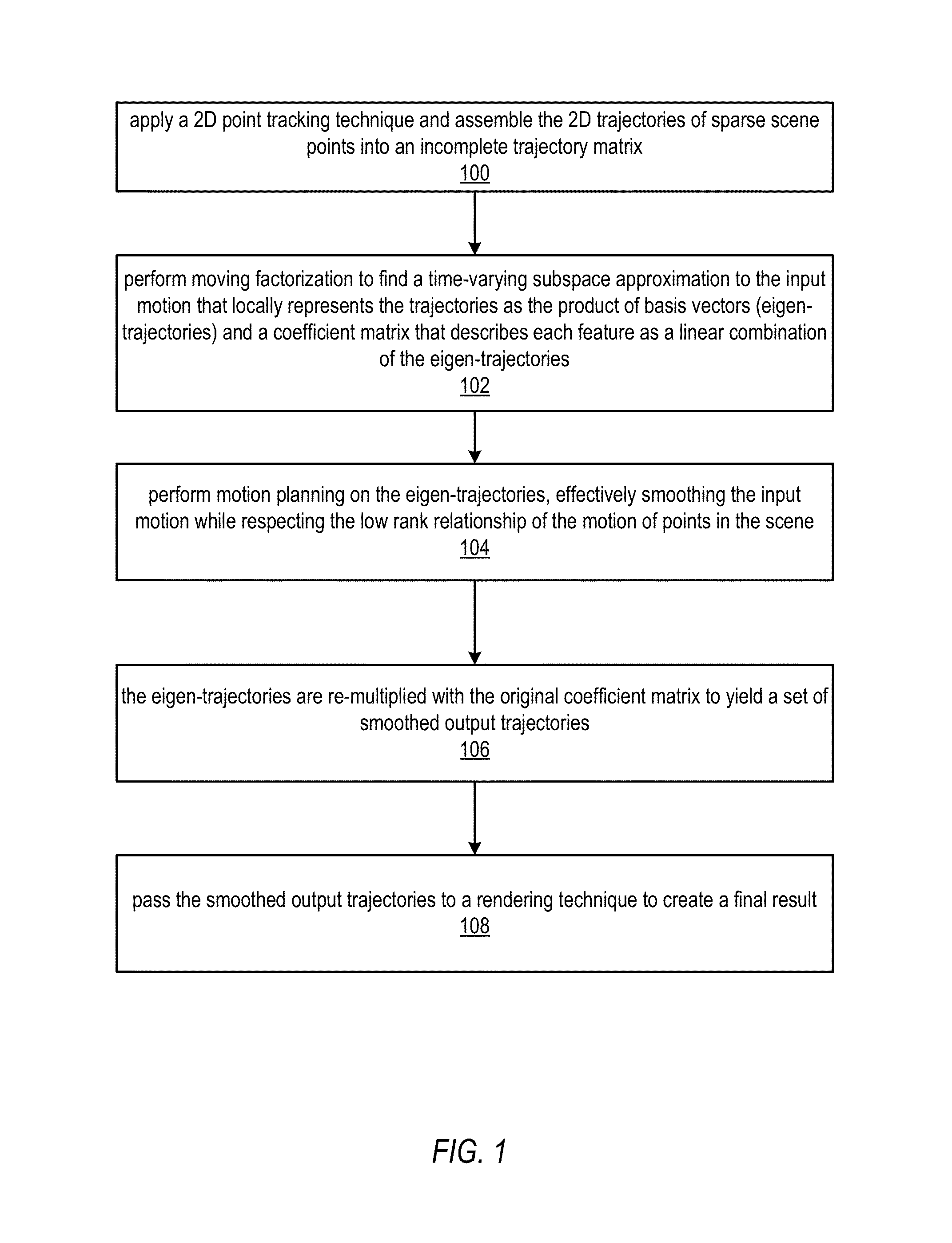Methods and apparatus for subspace video stabilization
a technology of subspace and video stabilization, applied in the field of methods and apparatus for subspace video stabilization, can solve the problems of poor quality of camera motion, limited amount of stabilization, and inability to meet the needs of many situations, and achieve the effect of effectively smoothing the input motion
- Summary
- Abstract
- Description
- Claims
- Application Information
AI Technical Summary
Benefits of technology
Problems solved by technology
Method used
Image
Examples
example implementations
[0095]Embodiments of the subspace video stabilization methods as described herein may be implemented in software, hardware, or a combination thereof. For example, embodiments of the subspace video stabilization methods may be performed by a subspace video stabilization module implemented by program instructions stored in a computer-readable storage medium and executable by one or more processors (e.g., one or more CPUs or GPUs). Embodiments of a subspace video stabilization module may, for example, be implemented as a stand-alone application, as a module of an application, as a plug-in for applications including image or video processing applications, and / or as a library function or functions that may be called by other applications such as image processing or video processing applications. Embodiments of the subspace video stabilization module may be implemented in any image or video processing application, or more generally in any application in which video sequences may be proces...
PUM
 Login to View More
Login to View More Abstract
Description
Claims
Application Information
 Login to View More
Login to View More - R&D
- Intellectual Property
- Life Sciences
- Materials
- Tech Scout
- Unparalleled Data Quality
- Higher Quality Content
- 60% Fewer Hallucinations
Browse by: Latest US Patents, China's latest patents, Technical Efficacy Thesaurus, Application Domain, Technology Topic, Popular Technical Reports.
© 2025 PatSnap. All rights reserved.Legal|Privacy policy|Modern Slavery Act Transparency Statement|Sitemap|About US| Contact US: help@patsnap.com



